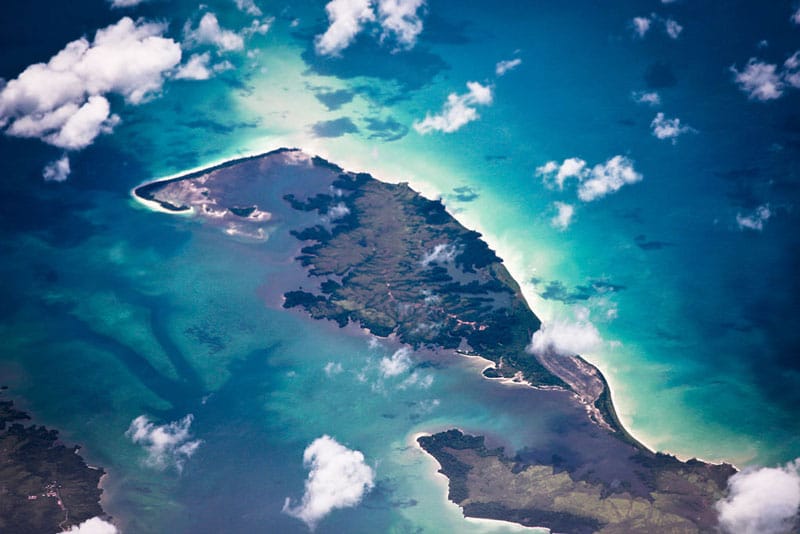Aiming to complete the terminal in 2028, the Centre has invited bids for the Rs 41,000-crore mega international container transhipment port (ICTP) being planned for the Galathea Bay of Great Nicobar Island of Andaman and Nicobar Islands.
The bids for developing the port were invited on Saturday, an official statement said. Post completion, the port will handle 4 million containers per year in the first phase, following which it will handle 16 million containers per year.
In a release, the ministry of ports, shipping and waterways said that the USD 5 billion port project will be completed with an investment from the government as well as PPP concessionaire.
“Progressive steps are being taken by the government under the leadership of Prime Minister Narendra Modi. The transhipment terminal will offer top-notch facilities to the stakeholders in the maritime trade sector,” Sarbananda Sonowal, minister for ports, shipping and waterways, was quoted as saying by Economic Times.
INTERESTING FACTS ABOUT ANDAMAN’S MEGA PROJECT
🏖️ The port is located along the international trade route in the Indian Ocean Region, and is believed to have a strategic location due to its proximity to Singapore, Klang and Colombo.
🚢 The location can also make the container port a leading hub as it has a geographical plus point of proximity to Indian ports.
🏖️ Sonowal said that the project will be a major landmark in developing India to become a self-assured and self-reliant nation, and will support the economic development of the country. Currently, 75 per cent of India’s transshipped cargo is handled by foreign ports. While 85 per cent of this component is handled by Singapore, Colombo and Klang, Colombo takes the lion’s share with 45 per cent.
🚢 The International Container Transshipment Terminal (ICTT) is part of Great Nicobar Island (GNI) that also includes Greenfield International Airport, a power plant and a township.
🏖️ The project is being spearheaded by Andaman and Nicobar Islands Integrated Development Corporation (ANIIDCO), under a vision plan conceived by the NITI Aayog. It aims to develop GNI as a sustainable, green, global destination for business, trade, and leisure.
🚢 The development of transshipment terminal would attract existing traffic of ports along the eastern coast of India, Bangladesh and Myanmar, as they form the primary catchment for transshipment terminal.
🏖️ Part of the GNI project, the proposed Great Nicobar Island International Airport (GNIIA) will be developed as an international airport. It will be a “dual use” airport that will cater to both military and civil requirements, and will be under the operational control of the Indian Navy. The airstrip will be developed to cater for operation of Airbus A-380 type of aircraft, in all weather conditions having peak hour passengers’ capacity of 4,000.
🚢 The project’s township plan includes commercial, industrial and residential zones, but a major chunk of the land will be set apart for different types of tourism projects and activities.
🏖️ The project also proposes the development of a power plant near the ICTT, with capacity to produce sufficient electrical power to run the new city. The power generation plan for the project envisages solar plants, gas based plants and some diesel generating stations in initial days.
CAN THE PROJECT TRIGGER ANOTHER JOSHIMATH-LIKE CATASTROPHE?
Even as government officials claim that the project on the island — mostly covered by forests and devoid of large-scale human activity so far — will be implemented in phases over the next 30 years, many have asked the authorities to give the decision a “serious thought”.
Nearly 100 former civil servants recently reached out to President Droupadi Murmu, saying that the project may be catastrophic for the island’s sensitive ecology and indigenous hunter-gatherer tribes like the Shompen who are already listed as a ‘particularly vulnerable tribal group’.
Already, the Island Coastal Regulation Zone of Great Nicobar was reduced in January 2021 for “development”. Subsequently, the Union territory administration de-notified 11.44 sq km of Galathea Bay Sanctuary on the island. This was followed by a special committee meeting to decide the extent of de-notification of the Onge tribal reserve on Little Andaman.
While government claims that these moves will bring growth and employment to the islands, little attention is being paid to the fact that the region has some of India’s largest mangroves and that over half the species of butterflies, 40% of birds and 60% of mammals found here are endemic. All of this unique biodiversity could be lost forever, a report in Times of India stated.
An editorial note by the same publication stated that even if we leave aside reclusive tribes like the Sentinelese that want nothing to do with the outside world, it is difficult to see the mega projects benefit major indigenous communities like the Nicobarese on account of their current socio-economic constraints. The projects would essentially cater to outsiders.
It editorial did agree with the 2018 Niti Aayog report stating strategical importance of the islands, but it said, “disregarding the ecological sensitivity of the region could see the making of another Joshimath-like catastrophe on a grander scale. Therefore, any future plans to develop the Andaman and Nicobar Islands need to seriously factor in the environmental impact on the region. Compensatory afforestation in Haryana or MP just won’t cut it.”
Source: News18.com






